Purpose Story 02
Overcoming challenges to
bridge people’s future
through a Japanese ODA project in Kyrgyzstan


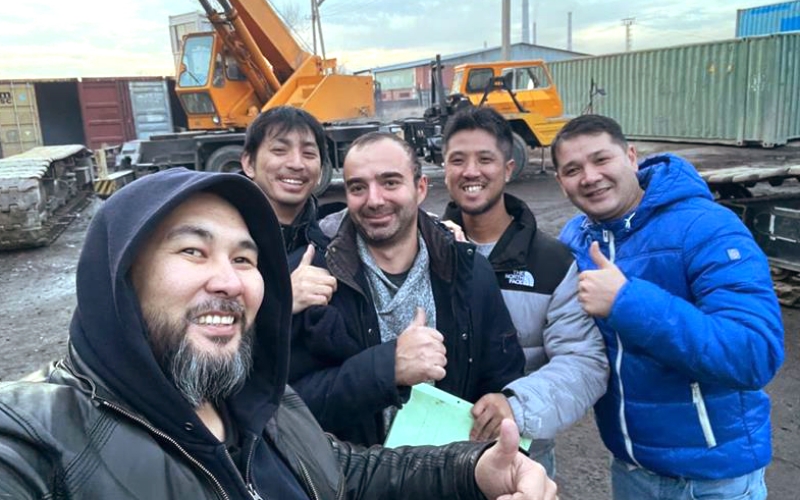
“We want to help transport equipment for your bridge construction project in Kyrgyzstan.”
This is how I contacted Takenaka Civil Engineering & Construction Co., Ltd. back in 2021. The company had been contracted for an ODA bridge replacement project in Kyrgyzstan, and Nissin decided to provide a quote for transport services. I was put in charge because of my experience with transporting cargo to Russia and Central Asia. Russia's invasion of Ukraine, however, meant that the route using the planned Trans-Siberian Railway route from the Russian Far East was no longer an option. Yet, the construction timeline had already been set in stone.
I proposed an alternative route bypassing Russia. It seems that we were the only company that proposed a detailed timeline for each transport process along with the route. Our proposal was accepted, and we were contracted to provide the transport. The joy of winning the contract was short-lived, however, because the mission turned out to be more challenging than ever due to the global situation at the time.

Profile
Global Logistics Sales Department, Section 5
Junichi Ogawa
Junichi Ogawa joined Nissin in 2010. He was assigned to his current department that handles factory related cargo in 2016. Ogawa is mainly involved in the export of heavy machinery and construction materials, which are used to construct factories or build infrastructure overseas. He has extensive experience in transporting cargo to Russia and Central Asia.
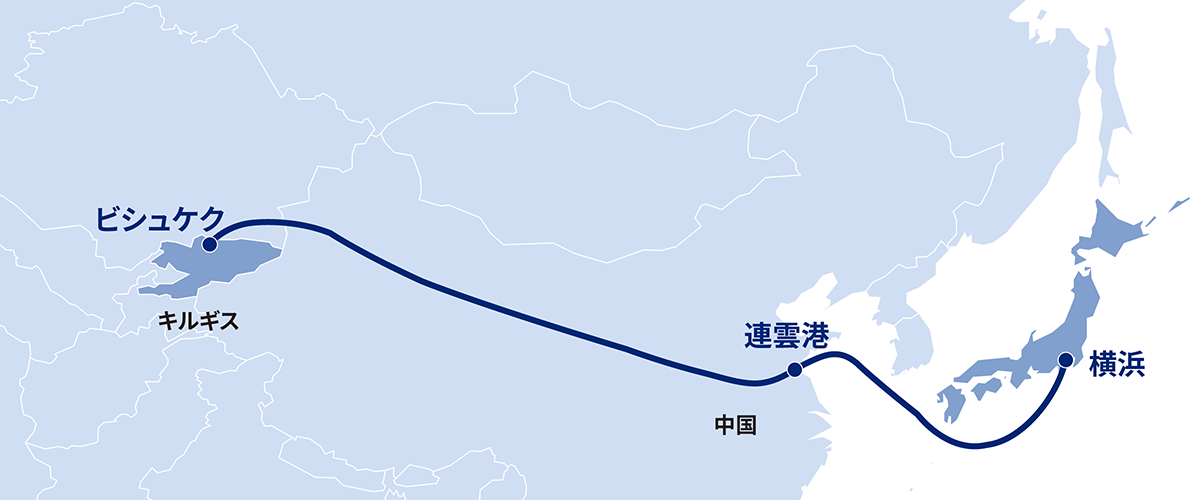
We explored a route to transport the main cargo from Japan to Lianyungang in China and then onward using China Railway, but this posed a problem. With Russia’s railways no longer an option, China Railways had already seen a surge in demand. Normally, it takes about two weeks to load the container on China Railways, but at that time, there was a possibility it could have taken three to four months. That would not have worked at all.
We did everything in our power, reaching out to our local subsidiaries and relevant ministries and agencies in China. As a result, thanks to the efforts of everyone involved, we managed to load the container in three weeks. After that, the cargo crossed mainland China by rail and finally arrived in Kyrgyzstan via Kazakhstan.
This construction project also required specialized heavy machinery unavailable locally, and it became our mission to transport these from Japan. This is because Japan's ODA projects often utilize advanced construction methods unique to Japan, which require specialized heavy machinery.
Since large heavy machinery weighing 40 tons is transported in special containers, however, it cannot be transported by rail—it’s just too heavy. This meant that it had to be transported more than 4,000 kilometer by truck and trailer after entering China. The heavy machinery would also pose a risk to bridges along the way. With safety a top priority and the help of a local agent, we managed to craft the best possible route.
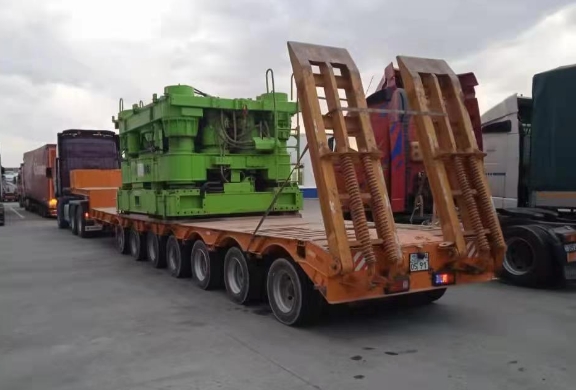
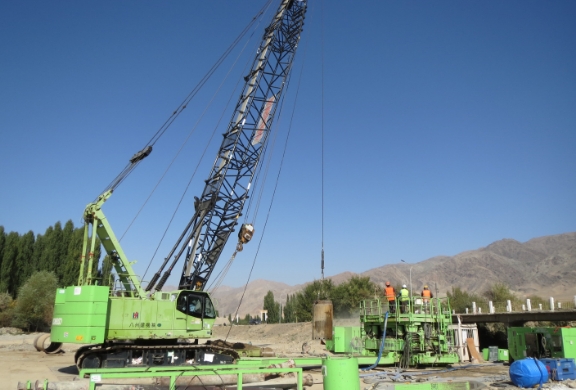
The most challenging part of this project was packing the heavy machinery for the return trip to Japan.
Heavy machinery is leased, and since it costs a huge amount per day, it was necessary to return it to Japan as soon as possible after construction ended. However, Kyrgyzstan is an agricultural country, and its infrastructure to export such machinery is still undeveloped. Therefore, we were genuinely concerned if we could access the resources needed to properly pack the heavy machinery into containers.
We thought it would go smoother if we headed to the site ourselves, so before transporting the cargo, we traveled to Kyrgyzstan and carefully checked accessibility to facilities for packing and vanning, equipment such as cranes and forklifts, and materials such as wood necessary for packing. After confirmation was made, we had the confidence to give the go ahead for transport to begin.
I traveled back to Kyrgyzstan when the heavy machinery was ready to be shipped back to Japan to instruct the local staff and check on packing and vanning.
I was shocked by what I found. The work site had been moved without our permission, and there was barely any work equipment or packaging materials. There was no sign whatsoever that packing had even begun. Despite the fact that we had carefully explained everything to the local vendor and confirmed that they could handle the work, people at the work site had no idea what was going on.
The local staff had absolutely no experience with packing, let alone other processes. What is more, they did not seem to understand the concept of packing for transport and loading cargo into containers. I really didn’t harbor any ill will (laughs), though. I have been involved in various projects in developing countries. That being said, however, this was the first time I had encountered this level of misunderstanding.
When we realized the severity of the situation, we immediately ordered lumber and bought other materials from a local hardware store. At the same time, we started work while teaching the local staff about packing and methods of manual vanning.
I used a translation app to explain the tight schedule and they gradually showed understanding. In the end, they worked hard from early morning until late at night.
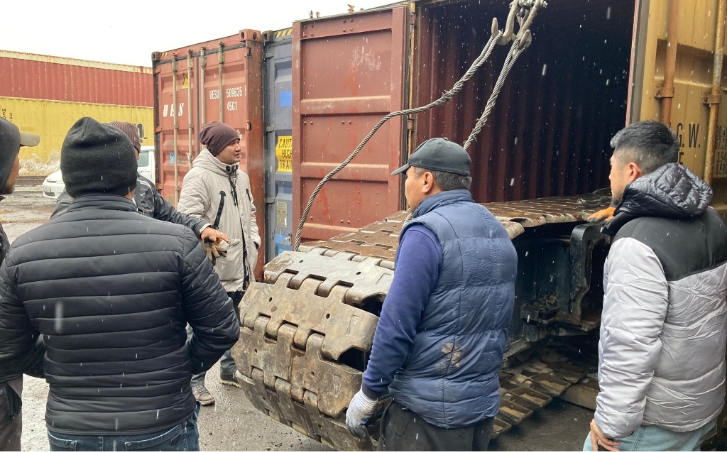
A few days later, we managed to finish the vanning and successfully sent the cargo off to Japan. Although delayed, it was within the range acceptable to the customer, and with that, the project was finally completed.
While challenging, in the end, I used my heart to communicate with the local staff in Kyrgyzstan. Through this ODA project, we contributed to the logistics and daily lives of the people of Kyrgyzstan, where infrastructure is still being developed. I was moved to think that our efforts would lead to a better future for them.
Nissin was able to become a "bridge" thanks to the cooperation of various departments. Even with the many impossible challenges, my colleagues responded admirably, which provided great strength. One of Nissin's own strengths is its ability to provide a full range of support for all transport processes while working closely with customers. This strength is made possible by the strong cooperation between each department, local subsidiaries, and vendors.
Because I often support ODA projects in unfamiliar places, I’m determined to find ways to do get the job done while collaborating closely with the customer and site, rather than just saying, "That's impossible." In the process, everyone involved can come together as one to overcome difficult challenges. We will continue to cherish this process while confronting difficult missions.
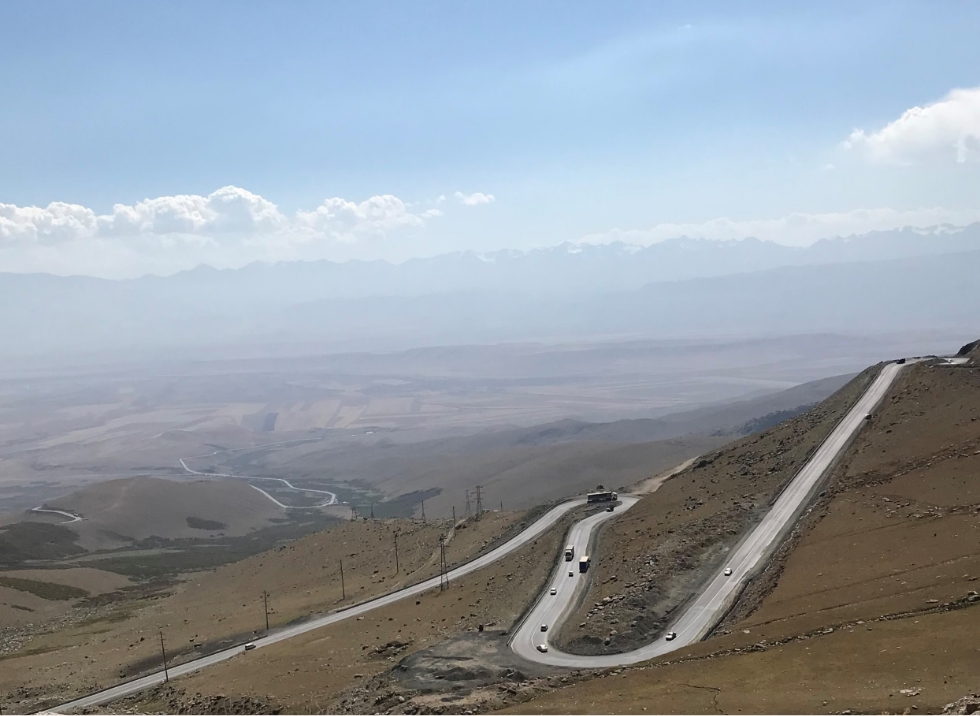
Related information